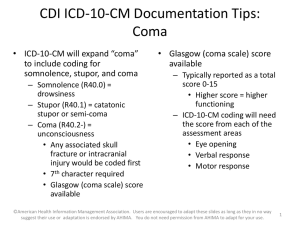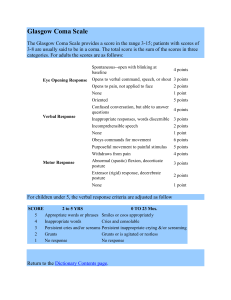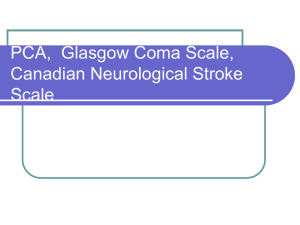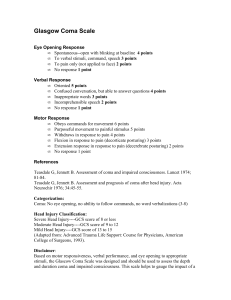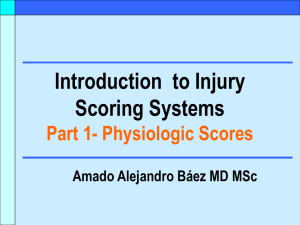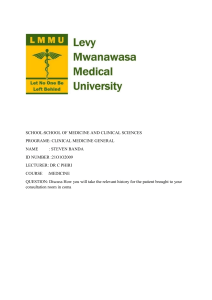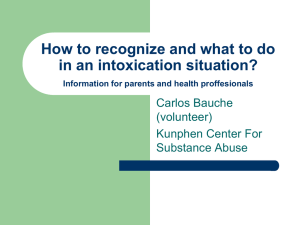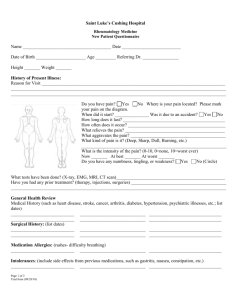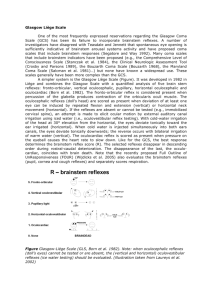Closed Head Injuries & Strokes
advertisement
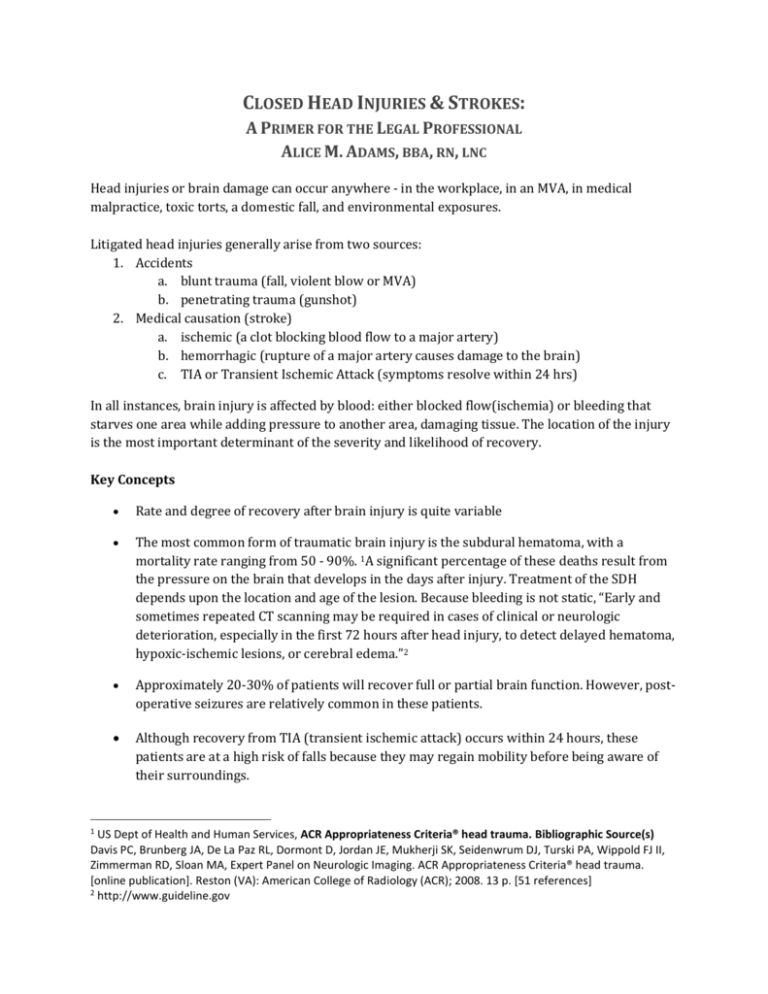
CLOSED HEAD INJURIES & STROKES: A PRIMER FOR THE LEGAL PROFESSIONAL ALICE M. ADAMS, BBA, RN, LNC Head injuries or brain damage can occur anywhere - in the workplace, in an MVA, in medical malpractice, toxic torts, a domestic fall, and environmental exposures. Litigated head injuries generally arise from two sources: 1. Accidents a. blunt trauma (fall, violent blow or MVA) b. penetrating trauma (gunshot) 2. Medical causation (stroke) a. ischemic (a clot blocking blood flow to a major artery) b. hemorrhagic (rupture of a major artery causes damage to the brain) c. TIA or Transient Ischemic Attack (symptoms resolve within 24 hrs) In all instances, brain injury is affected by blood: either blocked flow(ischemia) or bleeding that starves one area while adding pressure to another area, damaging tissue. The location of the injury is the most important determinant of the severity and likelihood of recovery. Key Concepts 1 Rate and degree of recovery after brain injury is quite variable The most common form of traumatic brain injury is the subdural hematoma, with a mortality rate ranging from 50 - 90%. 1A significant percentage of these deaths result from the pressure on the brain that develops in the days after injury. Treatment of the SDH depends upon the location and age of the lesion. Because bleeding is not static, “Early and sometimes repeated CT scanning may be required in cases of clinical or neurologic deterioration, especially in the first 72 hours after head injury, to detect delayed hematoma, hypoxic-ischemic lesions, or cerebral edema.”2 Approximately 20-30% of patients will recover full or partial brain function. However, postoperative seizures are relatively common in these patients. Although recovery from TIA (transient ischemic attack) occurs within 24 hours, these patients are at a high risk of falls because they may regain mobility before being aware of their surroundings. US Dept of Health and Human Services, ACR Appropriateness Criteria® head trauma. Bibliographic Source(s) Davis PC, Brunberg JA, De La Paz RL, Dormont D, Jordan JE, Mukherji SK, Seidenwrum DJ, Turski PA, Wippold FJ II, Zimmerman RD, Sloan MA, Expert Panel on Neurologic Imaging. ACR Appropriateness Criteria® head trauma. [online publication]. Reston (VA): American College of Radiology (ACR); 2008. 13 p. [51 references] 2 http://www.guideline.gov Strokes arising from blood clots usually require anticoagulation therapy to prevent further clotting, but improper medication management can result in a fatal hemorrhage Because patients can “go bad” quickly, frequent monitoring of vital signs, ICP (intracranial pressure) measurements, lab values, pupil checks and level of awareness is crucial. A critical part of assessment includes changes, even by one point, in the Glasgow Coma Scale The Glasgow Coma Scale3 (GCS) numerically represents the level of consciousness and is based on a 15-point scale for estimating and categorizing the outcomes of brain injury. The patient who is unable to respond verbally or follow commands can nonetheless have a reflexive response to painful stimuli. Families do not appreciate this form of assessment, but the patient’s physical response tells a great deal about how the brain is processing this noxious stimulus. The following signs are associated with a poor prognosis:4 A Glasgow Coma Scale less than 8 in the field A Glasgow Coma Scale less than 5 in the ER Unequal/changing pupil size Presence of alcohol at the time of injury (alcohol increases bleeding) Motorcycle accident (direct head impact and no airbag) Problems with ventilation, further depriving the brain of oxygen A patient with an acute brain injury is often placed into a medically induced coma to protect and allow the brain to rest by slowing metabolism. Mechanical ventilation controls oxygen and carbon dioxide levels that can aid in reduction of swelling, and sedation allows an override of the patient’s breathing, which is often labored and dysfunctional.5 Pain should be managed effectively because it can lead to a rise in intracranial pressure. An intubated patient is treated with short acting sedation and analgesia until time for weaning. Establishing the presence of pain and suffering in the unconscious patient includes knowledge of impending disaster (even with death cases), knowing the difference between purposeful movements and reflex, and evaluation of post-injury residuals. In order to put post-injury impairment into perspective, it is important to know who the patient was prior to injury. This information is sought by defense counsel in the determination of financial responsibility, but is equally important to plaintiff’s counsel in supporting a reasonable demand. 3 Herr K, Coyne PJ, Key T, et al. Pain assessment in the nonverbal patient: position statement with clinical practice recommendations Pain Manage Nurs 2006; 7:44–52 4 Marion DW, Carlier PM Department of Neurological Surgery, University of Pittsburgh School of Medicine, PA 15213. The Journal of Trauma[1994, 36(1):89-95] 5 http://www.guideline.gov/content.aspx?id=11468&search=medical+coma+for+brain+injury
